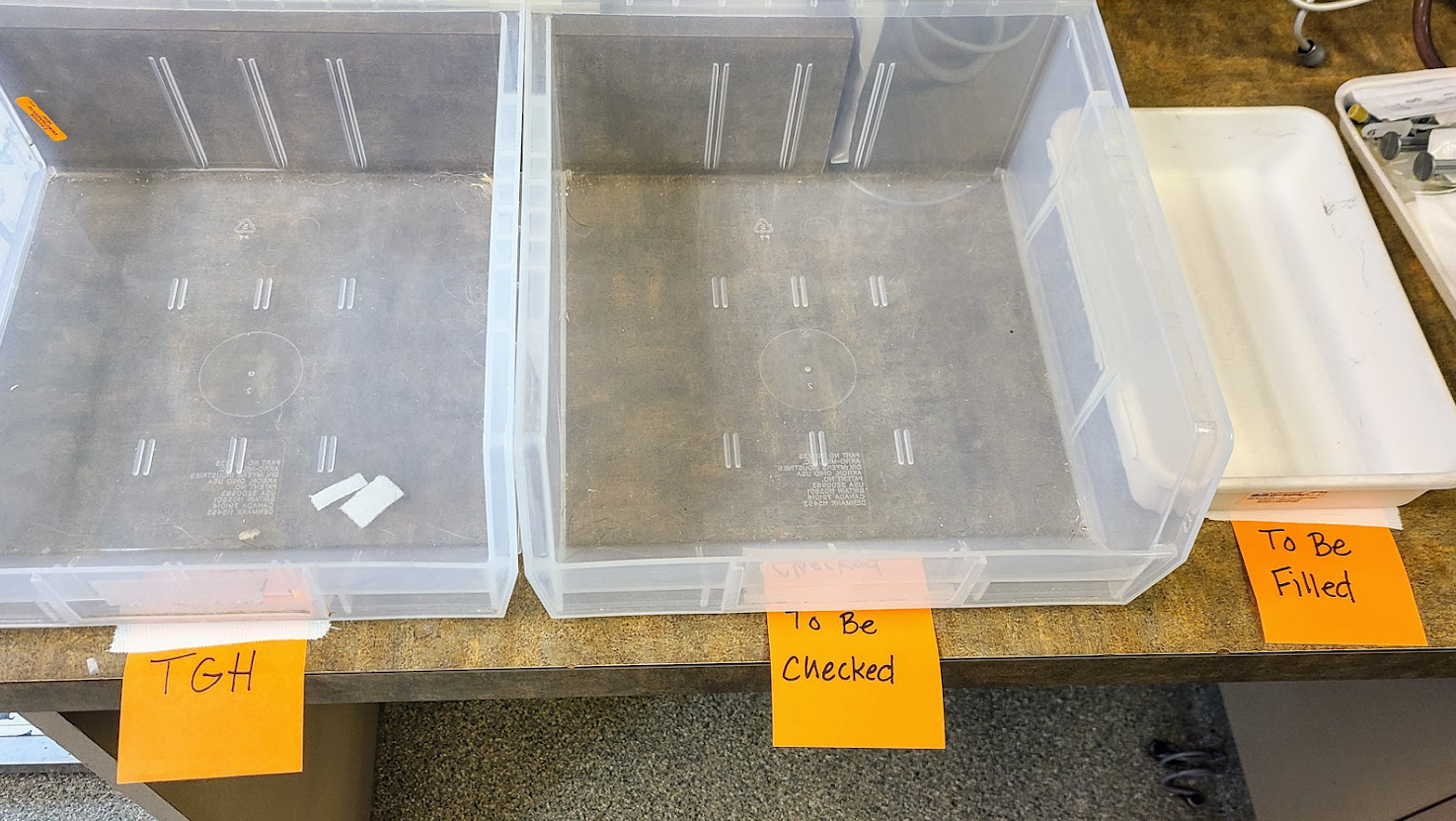👩⚕️ Florence Nightingale’s 1863 Notes on Hospitals begins:
It may seem a strange principle to enunciate as the very first requirement in a Hospital that it should do the sick no harm. It is quite necessary nevertheless to lay down such a principle.
This has never resonated more.
I received a lot of feedback after our recent Pandemic Mode Safety article, and much of it could be filed under the category of “veterinary hospital owner therapy.”
Some of these messages contained valuable lessons learned for all of us.
So we’ve decided to start releasing some of them as bite-sized thoughts, starting with prescription medication safety.
Hopefully, these tips can help your teams, too. 💙
💊 In-House Prescription Medications
I’ve always had a hunch that in-house prescription medication workflows are a hidden danger point in veterinary patient care.
Think about it: There’s an entire profession focused on filling prescription medications, yet our non-specialized and multiple-hat-wearing teams are expected to do so safely and consistently, with little training, and in the middle of our normal chaos.
🚨 Here are several compounding factors:
- We’re not a professional pharmacy, but we act like one.
- Medications are often stored with other similarly named medications.
- We often carry different formulations of the same medications.
- We often carry different-looking tablets of the same exact medication.
- Prescriptions are often managed as an afterthought.
- Prescriptions are part of the already chaotic discharge process.
- Animal owners don’t read instructions. (Do you when you get meds for yourself?)
- Labels are tiny and written in language that’s foreign to those administering the medications.
- There’s no treatment sheet, which means we lack daily dose checks, multiple human touchpoints, formularies, and close monitoring after administration.
😿 Danger Alert: Medication Mix-Ups
The pandemic has brought new risks.
On top of the challenges we already face, I’ve now heard several reports of animal owners going home with the wrong medications. And in many cases, they administered them. 😰
In one case, the pet owner was given medication bottles intended for 3 different patients (none being theirs) in one bag and administered the entire course of them. Only at recheck was the error caught.
The patient was not harmed (thankfully), but we can all agree that is not the point.
I’m concerned that this is an underreported risk exacerbated by the pandemic.
Prior to March, the discharge process happened in the exam room, with the family. We would pull medication bottles out of a bag one by one, walking through the medications and reading labels.
This simple step provided dozens of safety checkpoints that unexpectedly kept our patients safe.
Enter a global pandemic and we’re no longer doing any of that.
Instead, we’re reading instructions over the phone—from discharge paperwork or a computer screen—as quickly as possible so we can help the next patient in line during another bizarre, record-setting day.
🏫 Lessons Learned
To err is certainly human. But I have a policy that to err and to not learn is a giant missed opportunity.
Mistakes offer a crucial opportunity to adjust, so that particular error can’t happen again—or at least not in the same way.
In the medication mix-up above, Nightingale would have been proud.
Before any errors were reported or committee meetings were called, a group of enterprising nurses sprang to action.
The ingenious low-tech solution below was implemented and a huddle was hastily convened with an announcement—not only about the change trial, but also about the why (👏 powerful leadership).

The jury is still out on the result of this solution, but surely there is something to be learned for any hospital.
If you use Instinct, here are several other powerful ideas to leverage:
- Tips on Discharge Safety (see the OP COVID Discharge Group)
- Tips to Keep Patients Safe During the Pandemic
- Using Instinct to Help with Pandemic Mode
- Curbside Check-in and Triage (see the part on safety)
I’ll leave you with this: If you do one thing today in your hospital, Start. Tracking. Errors. 📈
Workflows are surprisingly complex, and error points are often unique to individual centers.
You can’t fix what you don’t know about, right?
Tracking doesn’t have to be complicated. Set up an email address to receive errors, or a Slack channel, or make a Google Form and link it on all of your computers.
Finally, keep an eye on your error culture. Error reporting by teams is fraught with nuance and shame. Set the tone up front by explaining the goals, remembering the fact that we're all human, and offering incentives (bonuses, prizes... hell, cash!) for anyone who reports an error or near miss.
Safety first. 🦺
